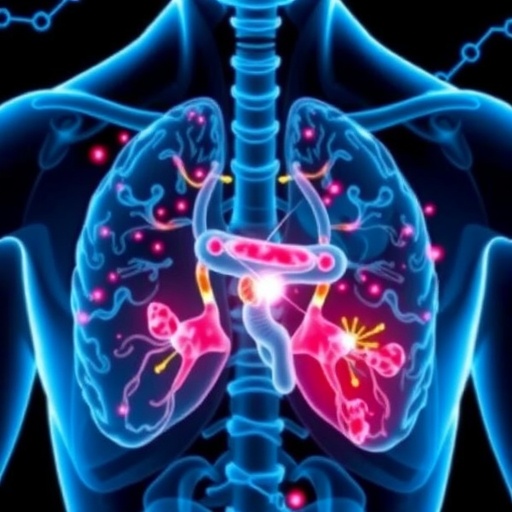CLEVELAND–Case Western Reserve University and Lucid Diagnostics, a subsidiary of publicly traded New York-based medical device company, PAVmed Inc. (Nasdaq: PAVM), have signed an exclusive license agreement to commercialize a technology that quickly and accurately detects Barrett's Esophagus, the primary precursor of esophageal cancer.
The technology, called EsoCheck, combines a non-invasive, cell-sampling device with highly accurate DNA biomarkers to detect the condition.
The company is based on discoveries by three scientific founders: Sanford Markowitz, the Markowitz-Ingalls Professor of Cancer Genetics and Distinguished University Professor at Case Western Reserve and medical oncologist at University Hospitals Seidman Cancer Center; Amitabh Chak, professor of medicine at Case Western Reserve School of Medicine, gastroenterologist at University Hospitals Digestive Health Institute and director of the Advanced Technology and Innovation Center of Excellence at University Hospitals Division of Gastroenterology; and Joseph Willis, professor of pathology and pathology vice chair for clinical affairs at University Hospitals Cleveland Medical Center.
"This is an exciting opportunity to bring a basic medical discovery forward into the clinic, to benefit patients, to prevent a deadly disease and to save lives," Markowitz said.
"We believe EsoCheck has the potential to replicate the impact of Pap screening for cervical cancer and colonoscopy screening for colon cancer in preventing deaths from esophageal cancer," said PAVmed Chairman and CEO Lishan Aklog. "By leveraging the substantial clinical work already completed by the team and interim results from an ongoing multicenter National Institutes of Health trial, we believe we can accelerate EsoCheck's commercialization path and target the first quarter of 2019 for the launch of the first commercial product."
"We have been impressed by the PAVmed team's track record of getting innovative products to market using a lean and efficient business model," said Daniel I. Simon, president and chief academic officer of University Hospitals Cleveland Medical Center and professor of medicine at Case Western Reserve School of Medicine. "Their unique and creative partnership model, which fully aligns our scientific and humanitarian interests with the commercial enterprise, is highly attractive to academic medical centers seeking to bring cutting-edge, life-saving technologies to patients."
The condition
The incidence of esophageal adenocarcinoma (EAC), the most common cancer of the esophagus (the pipe through which food passes to the stomach), has quadrupled over the past 30 years. Its prognosis, however, remains dismal, with less than 20 percent of patients surviving five years.
EAC cancer is mainly associated with Gastroesophageal Reflux Disease (GERD), commonly known as chronic heartburn or acid reflux. GERD, where stomach acid refluxes into the esophagus, affects 20 to 40 percent of Western adult populations, according to published epidemiological data.
The repeated exposure of the esophagus to acid can lead to pre-cancerous changes in its lining, called Barrett's Esophagus. Nearly all patients diagnosed with EAC cancer have evidence of previously undetected Barrett's Esophagus. If detected before EAC cancer develops, Barrett's Esophagus can be successfully treated, usually with non-surgical approaches.
"I just performed an endoscopy on a 64-year-old man who has had heartburn for over three decades," Chak said. "Unfortunately, his Barrett's and advanced cancer were diagnosed too late–only when he developed trouble swallowing his food. Our goal is to prevent this tragedy and save lives through early detection."
How EsoCheck works
In a simple five-minute office-based test, the patient swallows a vitamin pill-sized capsule containing a small inflatable balloon attached to a thin catheter, which swabs the target area for cells as the catheter is withdrawn. The sample is then tested for the presence of DNA biomarkers recently shown to be highly accurate in detecting Barrett's Esophagus.
"These technologies represent a potential true milestone in the ability to identify and prevent a lethal disease," Willis said.
The EsoCheck kit includes a sampling device consisting of a vitamin pill-sized, silicone-covered capsule containing a small deflated balloon attached to a thin silicone catheter. The patient swallows the capsule and, once it reaches the stomach, the balloon is inflated.
As the balloon is pulled back, it swabs the lower esophagus for cells. After a specified distance, the balloon is deflated so, in contrast to other esophageal sampling devices, the sample of cells is protected from dilution or contamination as it passes back through the upper esophagus and mouth.
DNA is extracted from the cells and tested for a panel of DNA biomarkers using a patented assay developed by the inventor team.
The license agreement
Under terms of the agreement, Case Western Reserve, through its Technology Transfer Office (TTO), grants Lucid Diagnostics an exclusive worldwide license to the intellectual property rights for both the balloon sampling device and DNA biomarkers of EsoCheck.
"We have been committed to helping develop and commercialize Esochek from its inception," said Stephanie Weidenbecher, TTO's senior licensing manager. "This partnership presents an excellent opportunity to bring this to fruition."
Translational support for the founders' research to develop the technology came from the Barrett's Esophagus Translational Research Network, National Institutes of Health, Case-Coulter Translational Research Partnership, Clinical and Translational Science Collaborative, Ohio Third Frontier, Nottingham Spirk Design Innovation and TTO.
"This has been a is a fantastic example of collaboration and synergy in Cleveland," said TTO Executive Director Michael Haag. "This program builds on a strong scientific and medical collaboration between CWRU and UH and is strengthened by local partners, such as Nottingham Spirk, and regional partners, like the State of Ohio Third Frontier."
###
About Case Western Reserve University
Case Western Reserve University is one of the country's leading private research institutions. Located in Cleveland, we offer a unique combination of forward-thinking educational opportunities in an inspiring cultural setting. Our leading-edge faculty engage in teaching and research in a collaborative, hands-on environment. Our nationally recognized programs include arts and sciences, dental medicine, engineering, law, management, medicine, nursing and social work. About 5,100 undergraduate and 6,200 graduate students comprise our student body. Visit case.edu to see how Case Western Reserve thinks beyond the possible.
About University Hospitals
Founded in 1866, University Hospitals serves the needs of patients through an integrated network of 18 hospitals, more than 40 outpatient health centers and 200 physician offices in 15 counties throughout northern Ohio. The system's flagship academic medical center, University Hospitals Cleveland Medical Center, located on a 35-acre campus in Cleveland's University Circle, is affiliated with Case Western Reserve University School of Medicine. The main campus also includes University Hospitals Rainbow Babies & Children's Hospital, ranked among the top children's hospitals in the nation; University Hospitals MacDonald Women's Hospital, Ohio's only hospital for women; and University Hospitals Seidman Cancer Center, part of the NCI-designated Case Comprehensive Cancer Center. UH is home to some of the most prestigious clinical and research programs in the nation, including cancer, pediatrics, women's health, orthopedics, radiology, neuroscience, cardiology and cardiovascular surgery, digestive health, transplantation and urology. UH Cleveland Medical Center is perennially among the highest performers in national ranking surveys, including "America's Best Hospitals" from U.S. News & World Report. UH is also home to Harrington Discovery Institute at University Hospitals – part of The Harrington Project for Discovery & Development. UH is one of the largest employers in Northeast Ohio with 26,000 employees. UH's vision is "Advancing the science of health and the art of compassion," and its mission: "To Heal. To Teach. To Discover." Follow UH on Facebook @UniversityHospitals and Twitter @UHhospitals. For more information, go to UHhospitals.org.
Media Contact
Mike Ferrari
[email protected]
216-844-7239
@uhhospitals
http://www.uhhospitals.org/case





